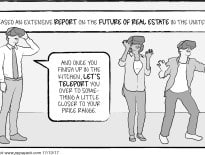With the building sector responsible for nearly 48 percent of all energy consumption in the U.S. and climate change the subject of heated national discourse, the sector is under growing pressure to make a difficult choice – produce the best financial outcomes, or increase building costs to boost energy efficiency and reduce carbon emissions.
In Massachusetts, buildings consume 54 percent of energy used annually, with several state and citywide initiatives in play to help combat that statistic. The state rolled out an executive order to reduce overall energy consumption at state-owned and leased buildings by 35 percent by 2020. In Boston in particular, the city launched its Climate Action Plan, committed to reducing greenhouse gas emissions 25 percent by 2020 and 80 percent by 2050.
Developing green buildings generally requires more upfront investment, a barrier to commercial real estate developers and building owners. However, some green technology solutions can reduce the upfront cost of developing or renovating buildings, while making the building more energy efficient.
Tapping Innovative Technologies
In looking to transform the building environment to be more energy-efficient, innovative new technologies are providing a solution. These allow decision-makers to achieve savings now and in the long term, while also reducing the threat of global climate change.
For example, HVAC Load Reduction (HLR) modules are doing just that – reducing the capacity and cost of HVAC systems so that the incremental cost of adding this technology is zero or even negative. Designed to reduce indoor air contaminants such as carbon dioxide (CO2), aldehydes and volatile organic compounds, this technology also reduces HVAC energy usage. The HLR technology can be installed in renovations, as a retrofit or in new construction, and is scalable, as a network of multiple modules can be deployed to accommodate any size building.
Instead of the traditional process of replacing the entire volume of a building’s indoor air every one to two hours, HLR modules clean and recycle existing indoor air. This enables a 60 percent to 80 percent reduction in required outside air intake, and a decrease in annual HVAC energy consumption of 20 percent to 30 percent (up to 40 percent in peak periods). In addition to the annual energy savings (OPEX), lower capacity HVAC requires less upfront capital.
The HLR system and other technologies like it should be top of mind for owners of large buildings in Boston, because they are now required to report annual energy and water consumption in keeping with the Building Energy Reporting and Disclosure Ordinance. That data is then publicly disclosed, which could attract (or scare away) corporate buyers and tenants.
Demand Grows For LEED-Certified Buildings
The incentive to renovate buildings to green standards is that LEED-certified buildings provide lower OPEX and better indoor environmental quality, which are more attractive to corporate buyers. What’s more, LEED-certified projects command 3.7 percent more in rent and have 4 percent higher occupancy rates than noncertified buildings.
Companies can earn as many as 17 LEED points – over 40 percent of the points required to receive LEED certification – from implementing HLR technology with an indoor air quality assessment. In addition, they can be eligible for rebates from Massachusetts utilities, such as through Mass Save, which offers financial incentives for energy efficiency improvements.
While building developers and owners may have typically turned away from “going green” because of common misconceptions around high costs, innovative solutions are turning those assumptions on their head. Building developers and owners can implement solutions that will help them save money upfront, use less energy and reduce their carbon footprint.
Udi Meirav is founder and CEO of enVerid Systems Inc.




 |
| 


